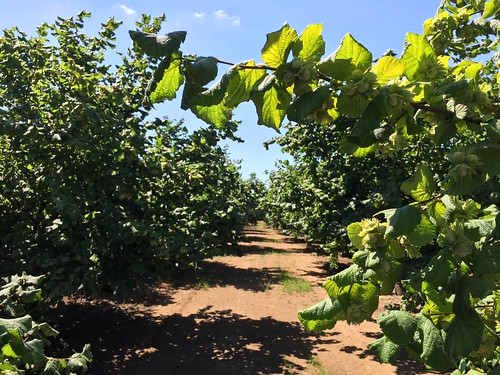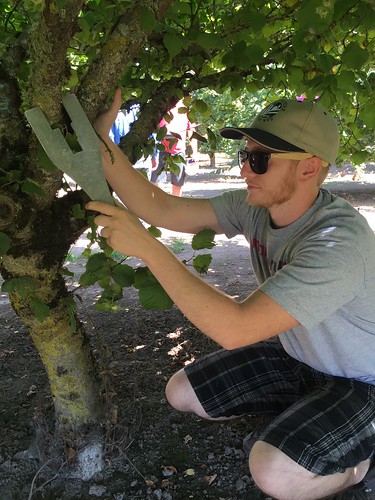
This is the oldest Yamhill variety hazelnut orchard in the State of Oregon. Yamhill is a newer, disease resistant variety developed by Oregon State University. The orchard is owned by Birkemeier Farms of Canby, OR.
Few realize that Oregon produces 99 percent of the hazelnuts in the United States. That means that an accurate forecast of hazelnut production in the Beaver state assists the industry in determining marketing plans and price. To do that, USDA’s National Agricultural Statistics Service runs a joint project with the Hazelnut Marketing Board of Oregon, which allows us to measure the most accurate production yields and forecasts for hazelnut production possible. This project is called the Oregon Hazelnut Objective Yield Survey.
When it comes to forecasting production of a particular commodity, there are various methods we can use. Predominantly we survey growers to get their estimate of their own farm production. We combine the farmers’ responses with objective yield measurements. In brief, we use the objective yield survey to count and measure the crop prior to harvest so that we can see what kind of crop we can truly expect by the end of the growing season.
To conduct the Oregon Hazelnut Objective Yield Survey, we randomly select hazelnut orchards that represent the bearing acreage within Oregon. Factors we keep track of include the age of trees and variety. Once an orchard is selected and the producer grants permission to enter an orchard, the National Association of State Departments of Agriculture (NASDA) enumerators randomly select trees and branches from which to pick the nuts and send them to our laboratory for processing.

Enumerator Brandon Jordan measuring a branch during the branch selection process.
Once in the lab, nuts are counted and samples are selected to peel off the husk. We then measure the size of the nut and crack it open to determine if a kernel is inside the shell. All results are entered in a computer and summarized. That sounds simple but careful steps are taken along the way to ensure all documented procedures are followed consistently. The objective yield analysis helps ground-truth the survey and builds an accurate picture of the upcoming harvest.
Pest and weather impacts have made this work more challenging in recent years, yet by following consistent procedures our results provide solid, objective statistics that those interested in hazelnut production can rely on.
We conduct all these measurements from 180 different orchards during the first two weeks of August. Since the results have such a strong impact on the hazelnut industry, we make sure the data are published as soon as possible. The culmination of all these efforts was the report for 2016, in which we forecast Oregon hazelnut production for 2016 to be 38,000 tons. If realized, this will be a 23 percent increase from the 31,000 tons produced last year and above the five-year average of 37,200 tons.

Lab Supervisor Tim Zielke and Enumerator Stephanie Zielke place hazelnuts in a sizing grid to determine the size of the nuts.
No comments:
Post a Comment
Note: Only a member of this blog may post a comment.